Je kent de dagelijkse sleur allemaal maar al te goed. ‘Different day, same shit’. Om aan de sleur te ontsnappen, zou je eens wat vaker het avontuur aan kunnen gaan. Maar je baan opzeggen, naar Azië vliegen en daar als Sjamaan emplooi vinden of Everest beklimmen, is toch iets te veel van het goede, nietwaar? “[…] Tussen droom en daad staan wetten in de weg en praktische bezwaren, en ook weemoedigheid, die niemand kan verklaren, en die des avonds komt, wanneer men slapen gaat.”, volgens Elsschot. Hoe kunnen we dan toch ontsnappen aan de sleur en het avontuur wél aangaan?
Wat is een ‘microavontuur’?
Alistair Humphreys kent de praktische bezwaren van de moderne stedeling maar al te goed. Hij is de schrijver van het boek Microadventures: Local Discoveries for Great Escapes. Daarin pleit hij voor het beleven van ‘microavonturen’. Het gaat om avonturen die je in je woonwijk kunt beleven, zoals onder andere ‘Een reis rond je huis’, ‘Gebruik je weekend’, ‘Uiteten gaan’ en ‘Vang het, kook het, eet het’. Avonturen voor mensen die het kantoorleven even willen ontvluchten maar dus alleen tijd hebben voor een eendagsavontuur. Daarna moeten de kinderen weer opgehaald worden bij de opvang. Precies díe haalbare avonturen, door Humphreys tot ‘microavonturen’ gedoopt, biedt hij ons. Zo beschrijft hij hoe je ‘de geïmproviseerde ontsnapping uit kantoor’ met verve kunt ondernemen, net als het ‘rivierzwemmen’ en bijvoorbeeld het ‘Creditcard Avontuur’ (avontuurlijk ja, maar wel met een vangnet). Volgens hem is er niet veel tijd of geld nodig om een gaaf avontuur te ondernemen. Zo kan je je, volgens Humphreys in het hoofdstuk ‘Forenzenavontuur’, vragen stellen als:
Hoe zou het zijn om op die heuveltop te zitten en de treinen te bekijken die voorbij denderen? Waarheen leidt het pad naast dat stroompje? Wat is er in dat kreupelhout te horen als de zon onder gaat en de vogels zich neervlijen voor de nacht?”
Antwoorden op die vragen leiden al gauw tot microavonturen. Wat is dus een microavontuur? Volgens Humphreys:
Het is dichtbij huis, goedkoop, eenvoudig, kort en biedt een 100% garantie dat het je leven verfrist. Een microavontuur is in de geest van een groot avontuur maar dan in een dag of zelf in slechts enkele uurtjes geperst”.
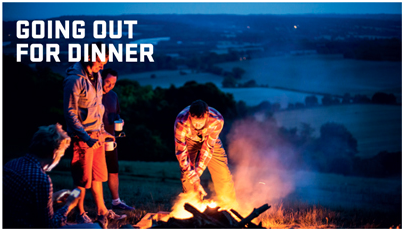
Maar who the fuck is Alastair Humphreys om van ‘microavonturen’ te spreken? Nou, hij komt van behoorlijk goede huize in dit opzicht. Zijn eigen avonturen mag je, in verhouding, gerust ‘mega-avonturen’ noemen, want hij is, zo is te lezen op de binnenflap:
“Een Britse avonturier, auteur, blogger, filmmaker en fotograaf. Hij bracht vier jaar fietsend rond de wereld door, een tocht van bijna 75.000 Kilometer door 60 landen over vijf continenten. Onlangs trok Alastair te voet door Zuid-India, roeide de Atlantische Oceaan over, liep zes marathons door de Sahara, trok dwars door IJsland en nam deel aan een expeditie in Antarctica dicht bij de Magnetische Noordpool. Hij hike’te 1600 Kilometer door Het Lege Kwartier [Eén van de grootse en droogste (zand)woestijnen ter wereld, bekend om zijn veranderlijke zandduinen, gelegen in het zuidoosten van Saoedi-Arabië en rond de grenzen met Oman en Jemen, red. Fernweh, JS] en zo’n 200 KM rond de M25 motorway – een van zijn baanbrekende ‘microavonturen’. Hij schreef negen boeken en werd door National Geographic één van de ‘Adventurers of the Year’ genoemd.” [Bron: boekcover, vert. JS]
Word je al moe van alleen al het lezen van dit gedeelte van zijn CV? Wees gerust hij heeft voor ons, gewone stervelingen, hele andere, zelfs (innerlijke) rust(-)gevende avonturen in petto!
Voorbeeld van een ‘microavontuur’ dat je zelf kunt aangaan: nachtwandelen
Als één van vele door hem aangedragen ideeën en voorbeelden, raadt hij aan om de routes die je vrijwel dagelijks loopt of die je maar al te goed kent nógmaals te bewandelen… maar dan ’s nachts. Hij noemt dat ‘A 5-To-9 Adventure’ hoewel dat veel uitgebreider is dan ik hier beschrijf. Je beleeft een kleine mindshift door de nightshift, zeg maar. Dit is overigens, zoals gezegd, een van zijn laagdrempelige instapavonturen; er zijn er ook die een stuk avontuurlijker zijn. Zie daarvoor zijn boek, vol prachtige foto’s.
De morgenstond heeft dan wel goud in de mond, maar er ’s nachts op uitgaan, kent ook zeker zijn charme. Omdat je in het donker minder ziet, wordt je je meer gewaar via je andere zintuigen. Die staan dan ook op scherp. Je wordt andere dingen gewaar, op een hele andere, schijnbaar alertere manier. Zo merk je dat vertrouwde plaatsen ineens heel anders, haast bijzonder of zelfs magisch lijken. Bovendien is het relatief stil. Die stilte bevordert een innerlijke stilte en rust die overdag vaak zo onbereikbaar is. Het kan zomaar zijn dat je je na je microavontuur zowel lichamelijk als geestelijk verfrist en zelfs geïnspireerd voelt.
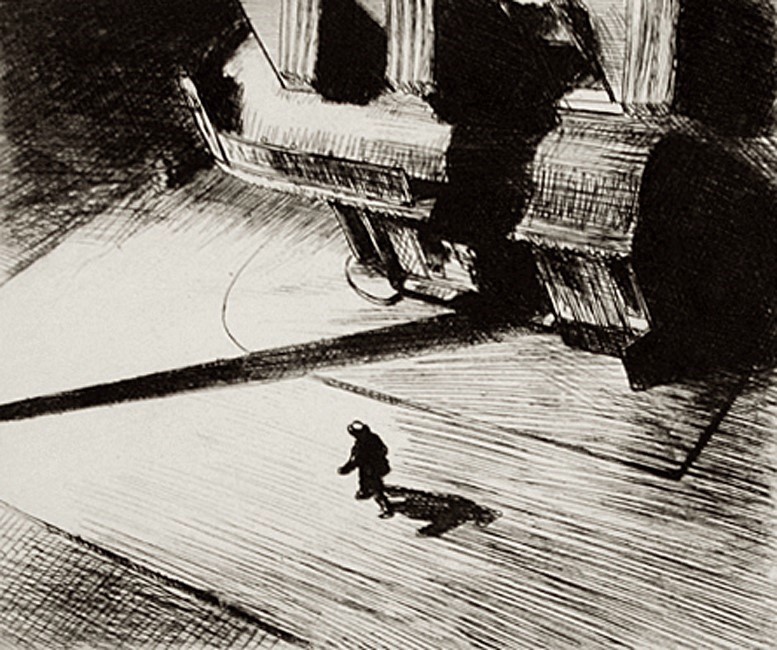
Lopen door de nachtelijke stad kan trouwens ook als een beetje ‘eng’ voelen. Je bent op je hoede en gaat steeds sneller lopen, zoals wellicht te zien is op de beroemde ets Night Shadows (1921, gepubliceerd in december 1924) van Edward Hopper (1882-1967). De dramatische compositie van een eenzame figuur die zich door de verlaten stad haast, gezien van boven. Zegt men niet dat vooral in de stad ’s nachts plaatsvindt wat het daglicht niet kan verdragen? Als je je inbeeldt dat er in elk onverlicht portiekje en om elke hoek een straatrover of moordenaar staat dan levert dat al snel een kleine thrill op die natuurlijk hoort bij het beleven van het microavontuur. Statistisch gezien, hoef je er in Nederland nauwelijks voor te vrezen dat criminaliteit je daadwerkelijk treft in de stad, zo in het holst van de nacht, maar je weet maar nooit natuurlijk. Het risico is immers ook niet nul…
(Nacht)wandelen volgens anderen
De gedachte van Alistair Humphreys is zeker niet nieuw. In de (enigszins filosofisch getinte) literatuur komen al eeuwen vele wandelaars en nachtwandelaars voor. De ultieme wandelaar, in ieder geval qua hoffelijkheid, is wellicht Robert Walser (1878–1956) in zijn cultboek De Wandeling, maar denk ook eens aan Lao Tze, Jean Jacques Rousseau, Friedrich Nietzsche, Robert MacFarlane, Frederic Gros, Paolo Cognetti, Peter Wohlleben, Jon Krakauer, John Muir, Reese Witherspoon, Jack London, Cheryl Strayed, etc. etc. Boeken over, kort gezegd, wandelen in de natuur van deze schrijvers lijken zich in een toenemende belangstelling te verheugen en worden tegenwoordig ook regelmatig verfilmd.
De hedendaagse populaire schrijver Sylvain Tesson reisde Langs ongebaande paden – een voetreis dwars door Frankrijk, een verslag van – jawel – een bijzondere voetreis dwars door Frankrijk maar ook met uitstapjes naar de wereld van literatuur en filosofie. Hij wandelt overigens nauwelijks ’s nachts. Anders is dat bij de onvergetelijke hoofdpersoon Knulp uit het gelijknamige boek van Hermann Hesse. Hij wandelde – ook wel ’s nachts – heel wat af, bijvoorbeeld naar café’s in dorpen in de buurt. Uiteindelijk in gezelschap van het door hem zo begeerde arbeidersmeisje. Een mooier pleidooi voor het vrije, ongebonden leven, wars van elke burgermansmentaliteit dan beschreven door Tesson en Hesse is er nauwelijks te vinden. De vagebonden die zij zijn: zouden we daar niet allemaal een beetje méér van in ons leven kunnen gebruiken, net als van de sympathieke Franse en Duitse zwerversromantiek?
De magie van nachtwandelen volgens Thoreau
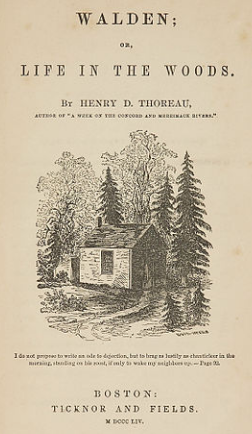
En wat te denken van Henry David Thoreau, onder meer bekend van Walden (1854) waarin hij beschrijft hoe hij zich terugtrekt uit de maatschappij en in de bossen bij een meertje genaamd Walden Pond, in een hutje gaat leven? Hij wordt ook wel gezien als de ‘uitvinder’ van de moderne ‘natuurwandeling’. Over de magie die nachtelijke wandelingen te bieden hebben, schreef hij in zijn essay ‘Night and Moonlight’. Hieronder vind je daarvan een gecomprimeerde versie.
Daarbij is natuurlijk de ‘microuitdaging’ voor jou, mocht je die willen aangaan, om zelf eens een nachtelijke wandeling te ondernemen, al is het maar in je woonwijk, om zo te bezien of jij ook ervaart wat Thoreau hieronder zo mooi beschrijft. Nog mooier wellicht is het om ’s nachts in een bos te gaan wandelen dat je goed kent, net zoals Thoreau. Herken je wat hij hieronder schrijft? Ervaar jij ook de magie die hij beschrijft, terwijl de rest van de wereld slaapt? Laat het ons weten.
Thoreau in ‘Walking’ (ingekort)
“Chancing to take a memorable walk by moonlight some years ago, I resolved to take more such walks, and make acquaintance with another side of Nature. I have done so.
I shall be a benefactor, if I conquer some realms from the night — if I report to the gazettes anything transpiring about us at that season worthy of their attention — if I can show men that there is some beauty awake while they are asleep — if I add to the domains of poetry.
Night is certainly more novel and less profane than day. I soon discovered that I was acquainted only with its complexion; and as for the moon, I had seen her only as it were through a crevice in a shutter, occasionally. Why not walk a little way in her light? Suppose you attend to the suggestions which the moon makes for one month, commonly in vain, will it not be very different from anything in literature or religion? But why not study this Sanskrit? What if one moon has come and gone, with its world of poetry, its weird teachings, its oracular suggestions — so divine a creature freighted with hints for me, and I have not used her — one moon gone by unnoticed?
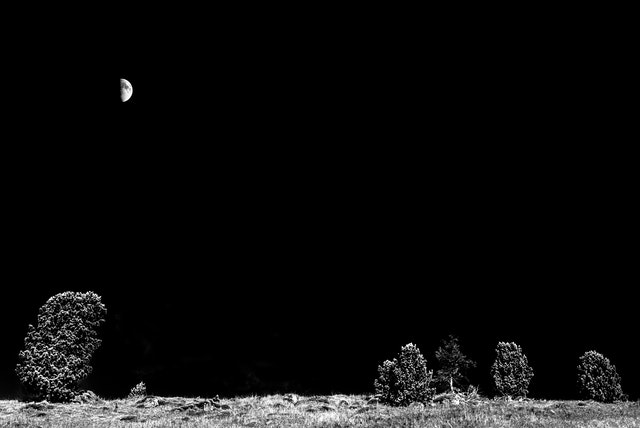
It must be allowed that the light of the moon, sufficient though it is for the pensive walker, and not disproportionate to the inner light we have, is very inferior in quality and intensity to that of the sun. But the moon is not to be judged alone by the quantity of light she sends to us, but also by her influence on the earth and its inhabitants. “The moon gravitates toward the earth, and the earth reciprocally toward the moon.” The poet who walks by moonlight is conscious of a tide in his thought which is to be referred to lunar influence.
Many men walk by day; few walk by night. It is a very different season. Take a July night, for instance. About ten o’clock — when man is asleep, and day fairly forgotten — the beauty of moonlight is seen over lonely pastures where cattle are silently feeding. On all sides novelties present themselves. Instead of the sun, there are the moon and stars; instead of the wood thrush, there is the whippoorwill (vert.: een nachtzwaluwachtige, red. Fernweh, JS); instead of butterflies in the meadows, fireflies, winged sparks of fire! — who would have believed it? What kind of cool, deliberate life dwells in those dewy abodes associated with a spark of fire? So man has fire in his eyes, or blood, or brain.
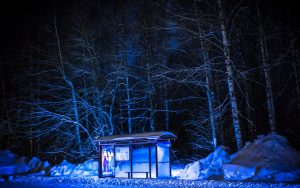
Instead of singing birds, the half-throttled note of a cuckoo flying over, the croaking of frogs, and the intenser dream of crickets — but above all, the wonderful trump of the bullfrog, ringing from Maine to Georgia. The potato vines stand upright, the corn grows apace, the bushes loom, the grain fields are boundless. On our open river terraces, once cultivated by the Indian, they appear to occupy the ground like an army — their heads nodding in the breeze. Small trees and shrubs are seen in the midst, overwhelmed as by an inundation. The shadows of rocks and trees and shrubs and hills are more conspicuous than the objects themselves. The slightest irregularities in the ground are revealed by the shadows, and what the feet find comparatively smooth appears rough and diversified in consequence. For the same reason the whole landscape is more variegated and picturesque than by day. The smallest recesses in the rocks are dim and cavernous; the ferns in the wood appear of tropical size. The sweet-fern and indigo in overgrown wood-paths wet you with dew up to your middle. The leaves of the shrub oak are shining as if a liquid were flowing over them. The pools seen through the trees are as full of light as the sky. “The light of the day takes refuge in their bosoms,” as the Purana says of the ocean. All white objects are more remarkable than by day. A distant cliff looks like a phosphorescent space on a hillside. The woods are heavy and dark. Nature slumbers. You see the moonlight reflected from particular stumps in the recesses of the forest, as if she selected what to shine on. These small fractious of her light remind one of the plant called moonseed — as if the moon were sowing it in such places.
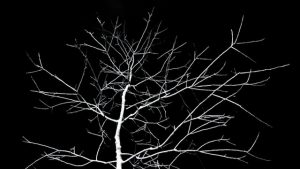
In the night the eyes are partly closed, or retire into the head. Other senses take the lead. The walker is guided as well by the sense of smell. Every plant and field and forest emits its odor now — swamp-pink in the meadow, and tansy in the road; and there is the peculiar dry scent of corn which has begun to show its tassels. The senses both of hearing and smelling are more alert. We hear the tinkling of rills which we never detected before. From time to time, high up on the sides of hills, you pass through a stratum of warm air: a blast which has come up from the sultry plains of noon. It tells of the day, of sunny noontide hours and banks, of the laborer wiping his brow and the bee humming amid flowers. It is an air in which work has been done — which men have breathed. It circulates about from woodside to hillside, like a dog that has lost its master, now that the sun is gone. The rocks retain all night the warmth of the sun which they have absorbed. And so does the sand: if you dig a few inches into it, you find a warm bed.
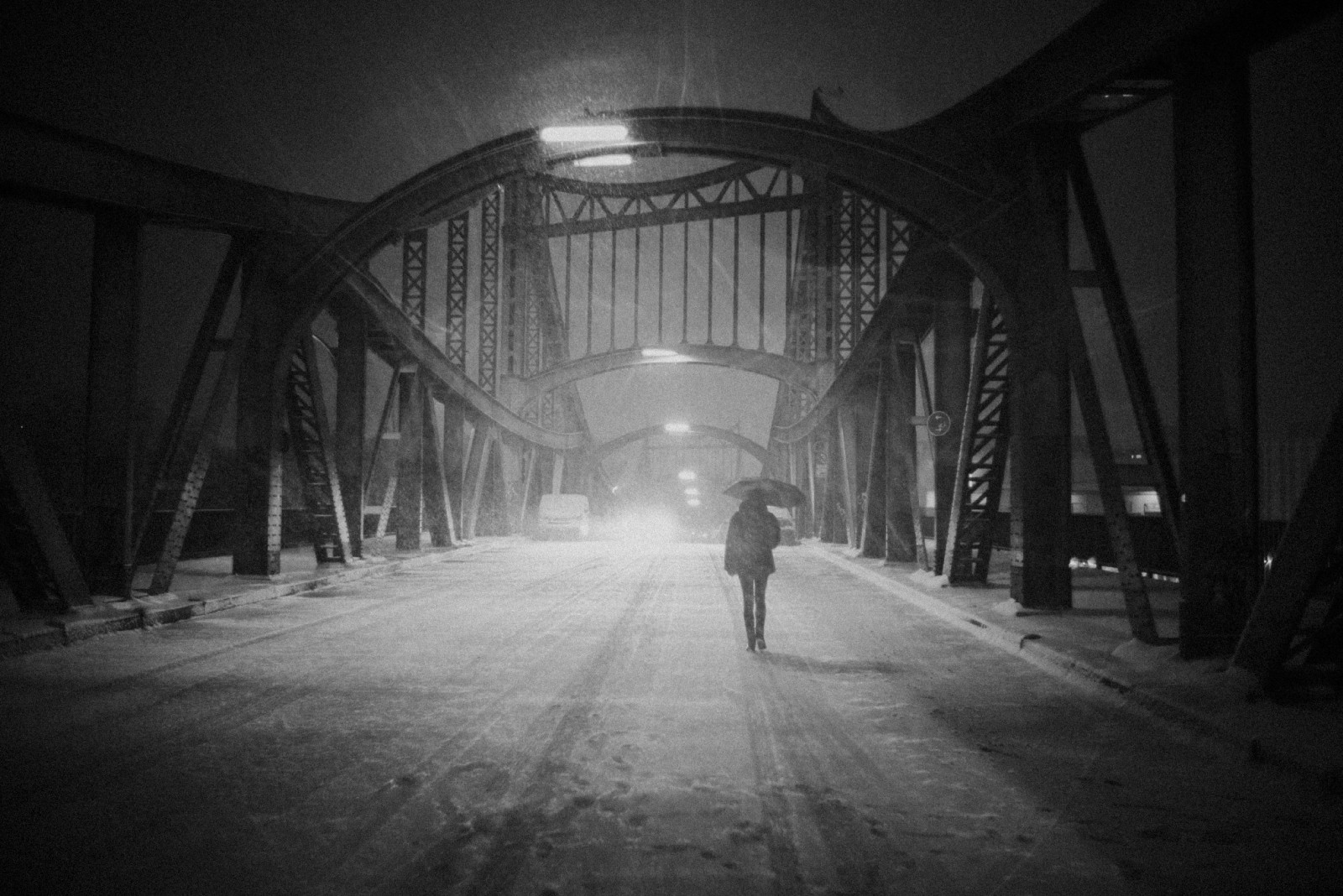
You lie on your back on a rock in a pasture on the top of some bare hill at midnight, and speculate on the height of the starry canopy. The stars are the jewels of the night, and perchance surpass anything which day has to show. A companion with whom I was sailing, one very windy, but bright moonlight night, when the stars were few and faint, thought that a man could get along with them, though he was considerably reduced in his circumstances — that they were a kind of bread and cheese that never failed.
How insupportable would be the days, if the night, with its dews and darkness, did not come to restore the drooping world! As the shades begin to gather around us, our primeval instincts are aroused, and we steal forth from our lairs, like the inhabitants of the jungle, in search of those silent and brooding thoughts which are the natural prey of the intellect.
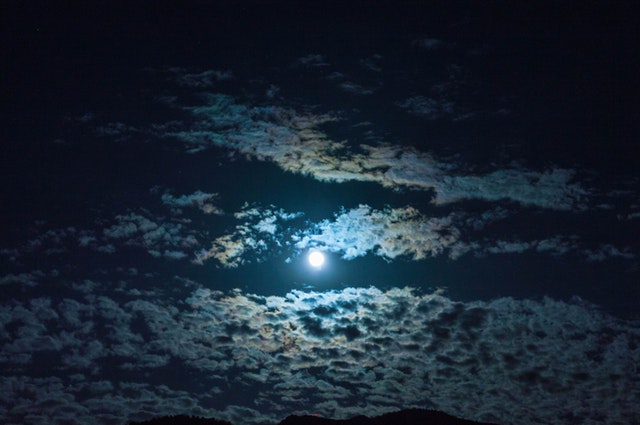
Richter says, that “the earth is everyday overspread with the veil of night for the same reason as the cages of birds are darkened, namely, that we may the more readily apprehend the higher harmonies of thought in the hush and quiet of darkness. Thoughts which day turns into smoke and mist stand about us in the night as light and flames; even as the column which fluctuates above the crater of Vesuvius in the daytime appears a pillar of cloud, but by night a pillar of fire.”
There are nights in this climate of such serene and majestic beauty, so medicinal and fertilizing to the spirit, that methinks a sensitive nature would not devote them to oblivion, and perhaps there is no man but would be better and wiser for spending them out of doors, though he should sleep all the next day to pay for it.
The Hindus compare the moon to a saintly being who has reached the last stage of bodily existence. Great restorer of antiquity, great enchanter! In a mild night, when the harvest or hunter’s moon shines unobstructedly, the houses in our village, whatever architect they may have had by day, acknowledge only a master. The village street is then as wild as the forest. New and old things are confounded. I know not whether I am sitting on the ruins of a wall, or on the material which is to compose a new one. Nature is an instructed and impartial teacher, spreading no crude opinions, and flattering none; she will be neither radical nor conservative. Consider the moonlight, so civil, yet so savage! The light is more proportionate to our knowledge than that of day. It is no more dusky in ordinary nights than our mind’s habitual atmosphere, and the moonlight is as bright as our most illuminated moments are.”
Bronnen en enkele literatuurverwijzingen:
- Coverfoto bushokje: Micael Widell
- Hermann Hesse, Knulp, Singel Uitgevers (ISBN 9789029518994)
- Alistair Humphreys, Microadventures – Local Discoveries for Great Escapes, William Collins, 2014 (ISBN 9780007548040)
- Sylvain Tesson, Ongebaande paden. Een voetreis dwars door Frankrijk, Arbeiderspers, 2017 (ISBN 9789029514385)
- Robert Walser, De wandeling, Lebowski, 2015 (ISBN 9789048828661)
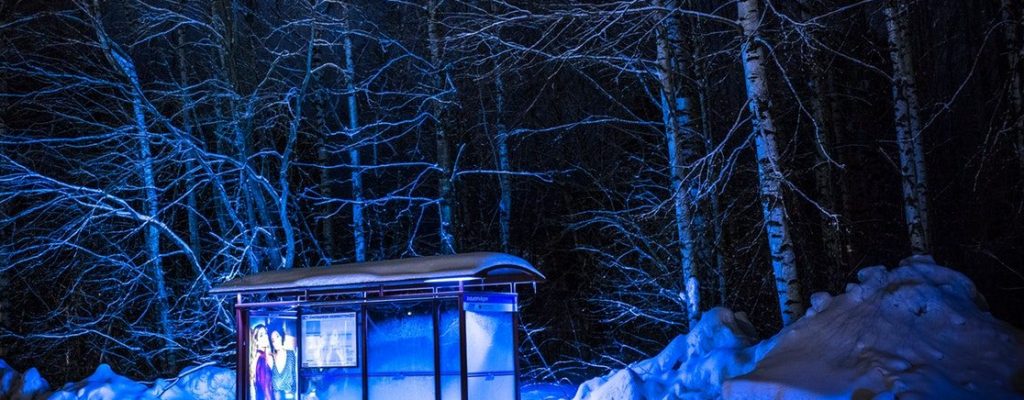
Geef een antwoord